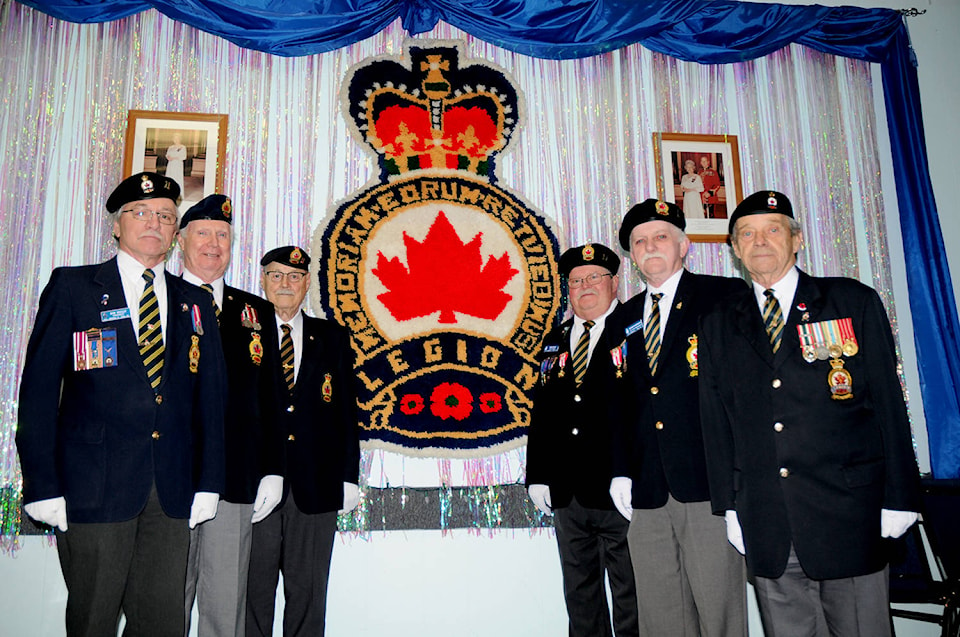Blood flowed in the battle at Vimy Ridge 100 years ago. The day, April 9, 1917, was a turning point in Canadian history and said to be the date when the country became a nation - four Canadian divisions fought under their own auspices, instead of the British, for the first time.
Next Sunday, one century to the date of the Battle of Vimy Ridge, Trail Legion members are holding a Candlelight Vigil at the Trail Cenotaph beginning at 6 p.m.
Members from Royal Canadian Legion Branch 11 encourage the community to come out, rain or shine, and join the “We Will Remember Them” service.
“The First World War was a very different war to the Second World War and on,” says Trail veteran Greg Hill. “There was so much slaughter … it was a different time. There was a lot of hand-to-hand combat, and it was the first time machine guns and trench warfare were used.”
Hill has a family connection to Vimy Ridge. His great uncle Lancelot Appleton, a member of the 54th Battalion Kootenay, was killed July 10 in the Vimy Ridge sector.
“He was my great grandfather’s brother and was from Castlegar,” Hill said. “And he was the only Lancelot in the First World War.”
Private Lancelot Appleton fought and was wounded in 1916 during The Battle of the Somme. The four-month fight was in the upper reaches of the River Somme in France, where more than one million men were wounded or killed, making it one of the bloodiest battles in human history.
“He recuperated in England then they put him with the 2nd Battalion (Eastern Ontario Regiment),” Hill added.
“He wasn’t killed the day of the Battle of Vimy Ridge it was later when the Germans counter-attacked, he was killed defending Vimy Ridge.”
The 24-year old soldier is buried in La Targette British Cemetery, Pas de Calais, France. He is memorialized on the Nelson Cenotaph, notes the website “54thbattalioncef.ca.,” a site dedicated to remembering the service of The 54th Canadian Infantry Battalion 1915-1919.
The 54th Battalion Kootenay was a Canadian Expeditionary Force that recruited in Southern British Columbia and was mobilized in Nelson. Soldiers embarked for Britain on Nov. 22 1915 and disembarked in France on Aug. 14 the following year. The men fought as part of the 11th Infantry Brigade, 4th Canadian Division in France and Flanders until the end of the war, then disbanded in August 1920.
“They fought a battle the rest of the allies couldn’t,” says Trail veteran Vern Schneider, referring to Vimy Ridge. “Other people couldn’t do it, so they put the Canadians in.”
While 3,598 Canadian soldiers were killed at Vimy Ridge, the impressive victory over German forces is often cited as the beginning of Canada’s evolution from dominion to independent nation.
Excerpt from Victory at Vimy Ridge, the Vimy Foundation
The Canadian Corps attacked Vimy Ridge (100) years ago. The German position had successfully resisted earlier Allied attacks, and it was heavily defended. But the Canadians took the ridge and in the process made the Corps’ great reputation.
By 1917, Canadians had been fighting for two years. The raw levies that held the Germans off at Ypres in April 1915 now were experienced soldiers. But the key to the success at Vimy came when Byng (Sir Julian Byng, commander of the Canadian Corps from May 1916 to June 1917) sent General Arthur Currie of the First Canadian Division to study the methods of the French. Currie learned they emphasized reconnaissance and used air photos extensively, distributing them widely. When they attacked, their objectives were geographical features, and the French rehearsed their tactics. Currie recommended the Canadians, like the French, follow suit. In the battle for Vimy Ridge, Currie’s ideas played the decisive role.
Every man at Vimy knew his task. Indiscreetly, Pte. Ronald MacKinnon of the Princess Patricia’s Canadian Light Infantry wrote to his father:
“We have a good bunch of boys to go over with and good artillery support so we are bound to get our objective alright. I understand we are going up against the Prussian Guards.”
When the assault troops went over the top at 5:30 a.m. on Easter Monday, they attacked in snow and sleet, the wind driving into the enemy lines. Their attack began with “the most wonderful artillery barrage ever known in the history of the world,” one officer wrote. Behind the barrage, the men moved forward over the badly broken ground, “now walking over the open in all directions,” wrote Padre F.G. Scott. “German prisoners were being hurried back in scores.”
Stunned by the Canadians’ success, the Germans retreated. The Corps, having sustained 10,602 casualties, dug in after a gain of 4,500 yards.
Byng received a promotion to command Britain’s Third Army. Replacing him was the 41-year-old Currie, the first Canadian to command Canada’s army in the field.
